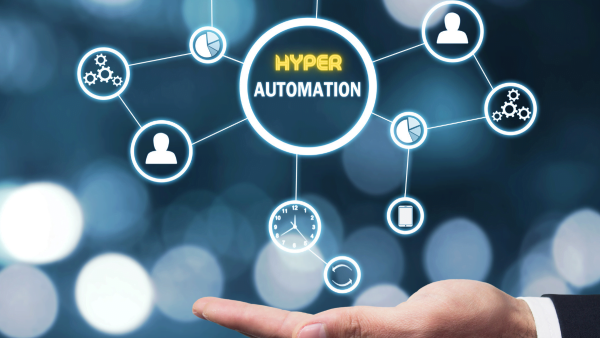 This article series discussed about what is automation, how to identify which processes are to be automated and how robotic process automation can be used to automate processes. Robotic process automation (RPA) used robots to automate tasks which are usually performed by humans using multiple processes and tools. Using Artificial Intelligence (AI) and Machine Learning (ML) processes can be further automated, so that the dependency on humans is further minimized. This type of combining automations using AI and ML to automate processes is called hyperautomation.
This article series discussed about what is automation, how to identify which processes are to be automated and how robotic process automation can be used to automate processes. Robotic process automation (RPA) used robots to automate tasks which are usually performed by humans using multiple processes and tools. Using Artificial Intelligence (AI) and Machine Learning (ML) processes can be further automated, so that the dependency on humans is further minimized. This type of combining automations using AI and ML to automate processes is called hyperautomation.
Why hyperautomation?
Before addressing why hyperautomation is necessary, we must understand the difference between automation and hyperautomation. Consider the same example, I used in the RPA article *. A robot is used to read a list of contacts and send invoices to these contacts via email. In this process, the list of contacts and the lists of invoices are fed to the bot and the bot sends emails at each iteration, so that at the end all emails have been sent. If the bot is trained to read the responses sent by these contacts or scan the invoices to gather data in them using AI and ML techniques, then an additional layer of automation is required. This is where hyperautomation is used.
Therefore, hyperautomation is an extension and/or a combination of automation technologies. A RPA process can be standalone to achieve its goals. However, hyperautomation requires a system of automation processes interacting together to achieve its goals. These interactions are also handled by another automation process or processes. Therefore, it is a mesh of processes that are linked together.
Now to answer the question why hyperautomation is required we can take the same example. If humans were to read emails or scan documents, it would take a long time to load each email and document, process the information and then provide some action on what was found in them. As discussed in the RPA article, the main reason behind RPA is that computer-based robots are consistent, unbiased and efficient. Since hyperautomation is a combination of RPA, the same reasons apply. Processes which are performed by humans are further automated using background robots to save costs, time and improve throughput.

What are the barriers towards adopting hyperautomation?
As discussed earlier to link automation tools some media or interconnections between these automation processes is required; the main barrier in linking these processes and how this interoperability is achieved. Processes that are already automated use different tools and internal mechanisms to perform tasks. They were designed often to perform their specific task rather than link to other processes. If hyperautomation is to be achieved, either all these tasks should be redesigned or a suite of tasks that can interoperate with each other should be designed. As this is a timely, costly and risky processes in the business angle of users many automation adopters are reluctant to further automate.
Another issue derives from the use of AI and ML to automate these automations. On one hand, AI and ML in the examples above (Natural Language Processing in the example of emails and Optical Character Recognition in the example of invoices) are still in their infancy stages. On the other hand, expert knowledge is required to code and maintain these automations which are currently handled by only a few people with that expertise.
While several tools are already available to hyperautomate tasks, the context on which they should be used to further increase returns is doubtable.
Image Courtsey: https://itchronicles.com






